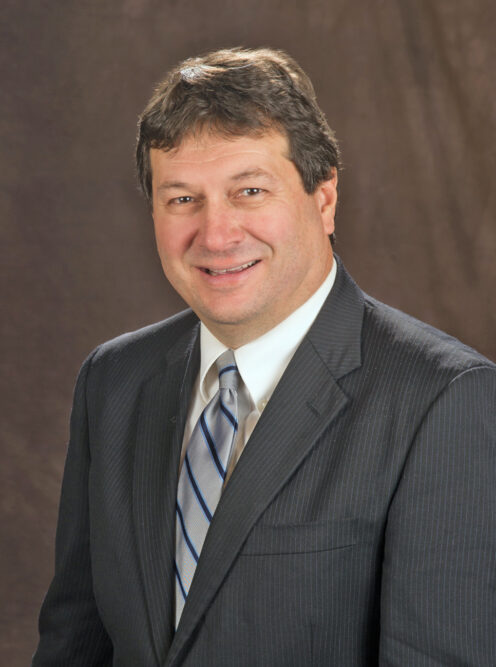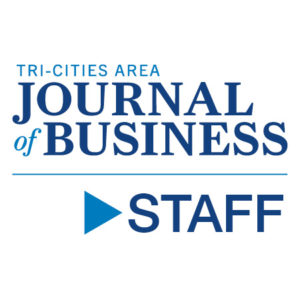
Home » Chat with Tim Arntzen, Port of Kennewick CEO
Chat with Tim Arntzen, Port of Kennewick CEO

June 15, 2016
It’s been two and a half years since an airplane taxied down a runway at Vista Field in Kennewick. Kennewick residents haven’t seen much activity at the airfield since it closed Dec. 31, 2013.
That’s not because the Port of Kennewick isn’t working on the project to redevelop the area, however. It’s just that most of the work on the project is being done on paper and in boardrooms.
Vista Field is a 103-acre former general aviation airfield in Kennewick near the Columbia Center Mall, and adjacent to the City of Kennewick’s Three Rivers Entertainment District, which includes the Three Rivers Convention Center and the Toyota Center.
This month, the TCAJOB checked in with Tim Arntzen, CEO of the Port of Kennewick, to get an update on the project.
TCAJOB: What’s been happening since the Vista Field airport was closed?
Arntzen: From the start, the Port committed to involving the entire region in the planning for the future of this unique asset. Following airport closure, a multi-year period of public comment commenced.
Since then, planners Duany Plater-Zyberk–or DPZ as they are known—spent time checking the assumptions and ideas generated during the public meetings and making adjustments to help us create a truly functional, cost-effective, long-term master planning document. Decisions about the project scope, amenities, pedestrian and vehicle traffic, and more were directly influenced by public input and collaboration.
Our planning isn’t just a conceptual plan. It includes the nitty-gritty details involving streets, sewer, lights, communications networks, fire protection, and areas for commercial, residential, retail, and entertainment. Each takes time to thoroughly vet and determine the proper placement and proportion.
TCAJOB: Who owns Vista Field?
Arntzen: Port of Kennewick (a special purpose district whose mission is economic development) owns the land on behalf of the citizens—the more than 125,000 people who live in the Port district. Based on public input and studies, Port commissioners and staff are working to redevelop the former airfield site to create benefit for the entire community by fostering jobs, expanding business options, enhancing the quality of life and diversifying the economy for future generations.
TCAJOB: What is the status of the master plan? What’s going to be done with all that land?
Arntzen: City of Kennewick and Port staff are finalizing the last stage of that master plan—not a conceptual plan—but a fully developed and very detailed plan addressing all of the terms under which Vista Field will be built and sold.
The master plan embodies what the public said was important. It will be the blueprint to guide the redevelopment process, for what gets built where—and how—down to the curb, gutter, sidewalks, street lights, sewer lines, water flows and fire service at build-out.
When complete, Vista Field could include more than 1,000 residential units; 750,000 sq. ft. of office, retail, and restaurants; and five acres of parks.
Port staff plans to present the final master plan to the Port Commission and City Council for approval by fall.
TCAJOB: What is planned for Vista Field? You’ve had a lot of community input; now what?
Arntzen: This development is different. The plans for Vista Field are exciting and honor the community’s desires for a walk-able, bike-able, pedestrian-friendly and transit-oriented city-center. Place filled with unique shops and local restaurants, cafés and offices, sustained by diverse residential neighborhoods with small-scale streets, boulevards and thoroughfares. However, creating this type of development means established rules and regulations must be reviewed and adjusted to give the residents what they want.
This project will create new jobs and residential options while developing civic amenities everyone can enjoy.
The plan is to create a vibrant community dotted with green spaces, waterways, pathways, civic buildings and public facilities, like an arts center, which foster visitation, entrepreneurial ventures, and a city-center lifestyle. The goal is to create an entirely new, urban destination for the region by offering a variety of living spaces—from affordable and multi-unit; to live-work, and single-family; apartments and condos; to courtyard duplexes, and multi-generational living spaces—interspersed with commercial development.
The Vista Field plan will include a variety of ‘neighborhoods.’ There will be places for shopping, and dining, and offices. There will be areas focused on entertainment and public spaces. There will be areas that recognize and celebrate local history. And throughout there will be a mix of residential options appealing to a variety of ages and incomes. Single-family homes, condos, and apartments — spaces for mother-in-law cottages. There will even be buildings that allow residents to live above their office or business space.
TCAJOB: Why is it taking so long to get something done at Vista Field?
Arntzen: Great projects require great planning and Vista Field is on the same footing as many of the large scale and transformative redevelopment projects that have been successfully completed worldwide.
By taking time to do thorough and detailed planning with lots of public input, the Port is crafting a solid master plan that can be sustained. That planning includes a thoughtful analysis of economics and traffic patterns, strategic siting of streets and parks and public facilities and optimal placement of commercial, residential, and mixed-use neighborhoods so we end up with a truly vibrant, regional town center.
In addition, the Port has limited funds and the commissioners have challenged staff to implement the community-driven Vista Field redevelopment plan in keeping with the Port’s customary practice of improving the community without raising taxes—taking a pay-as-you-go approach. We plan to leverage income from land sales and existing revenues with public-partnerships and private-sector investments to pay for the redevelopment.
We are as anxious as the community to move ahead. But we will do it right. There is still much more to do before visible work to redevelop the former airport can begin. We look forward to the day we announce the groundbreaking at Vista Field and we know because of the in-depth work being done now, we will be able to redevelop Vista Field consistent with the public’s vision.
TCAJOB: When will construction begin?
Arntzen: Public input and strategic planning took place in 2015. This year, there will be the adoption of the final master plan, and we’ll identify partners and funding sources for streets, utilities and phase one projects. In late 2017 to mid-2018, we hope to begin construction of phase one.
TCAJOB: How long will it take to redevelop Vista Field? Who is going to develop the site?
Arntzen: The Port of Kennewick will take a phased approach and guide the process by working with a variety of smaller developers until the master plan is fully implemented — as opposed to flipping the entire site to a single large developer and then being at the mercy of any one company to follow the community’s vision long-term.
Phase one is anticipated to be complete within five years after groundbreaking. Phase one includes installing roads, sidewalks, street lights and underground utilities. It also entails the creation of shovel-ready parcels of land for sale to private investors, and could include a public space such as a plaza, pocket park, courtyard or water feature. Full redevelopment of the site will likely take 15 to 20 years — or more.
TCAJOB: How is the redevelopment going to be paid for? What’s it going to cost?
Arntzen: The Port commissioners are focused on taking a lean and fiscally conservative, pay-as-you-go approach to development—meaning there will be no tax increase requested to transform the Port’s Vista Field property into a regional town center.
We are preparing the phase-one financing plan, which we anticipate will cost around $5 million. And the commissioners have challenged staff to leverage existing revenues and land sales, with stakeholder funding, grants, and private investment dollars to pay for that development. Our goal is to be a spark for the first phase of development. When we finish the infrastructure for phase one, we’ll have three buildings readied for restaurants or shops, a public space, an area for the performing arts center, and 15 acres to sell to bring back in proceeds. We plan to take proceeds from land sales and return those right back into the next phases of the project.
And it’s important to note the site is projected to attract $500 million (that’s half a billion dollars!) in private investment at full build-out. All the new development will generate more tax revenues to support police and fire and hospitals, and libraries, and other municipal services—without any increase in cost to existing taxpayers.
TCAJOB: Will taxes go up to pay for Vista Field?
Arntzen: The Port of Kennewick is following its customary practice of enhancing the community without asking for new taxes. Port commissioners are focused on fiscally sound development; following a pay-as-you-go approach and working to leverage existing revenues and land sales, with stakeholder funding, grants, and private investment dollars.
TCAJOB: Who will benefit from the redevelopment?
Arntzen: The Port and its partners have been diligently working on every detail to ensure the Vista Field concept is economically sustainable and will provide a positive return on investment. The redevelopment of Vista Field will add both taxpayer equity and value to this community and to the broader region.
The private sector also benefits. In fact, the site is projected to attract $500 million in private investment at full build-out. That new private development will generate more tax revenues to support police and fire and hospitals, and libraries, and other municipal services—without any increase in taxes or cost to existing taxpayers.
TCAJOB: There has been a lot of talk about an arts center at Vista Field. Is the Port of Kennewick building a performing arts center?
Arntzen: No, the Port is not building a performing arts center. However, the Port has identified an area for a future arts center within the phase one master plan. Many arts groups are working together on their vision of creating a multi-discipline arts facility under the leadership of the Arts Center Task Force. And that Arts Center Task Force is currently working to raise private funds for an 800-seat, purpose-built arts center, which they have proposed constructing at Vista Field.
TCAJOB: Why was an area for an arts center identified?
Arntzen: During the public input and planning sessions there was a high level of support for an arts center. And the Port commission is hopeful that performing arts and other public facilities can help spark interest and energy in future development.
TCAJOB: What else will be built besides an arts center, is there room for other public facilities like a waterpark or arena?
Arntzen: Locations for future public facilities have been identified within the master plan; Port commissioners will consider additional transformational projects as they are brought forward and advanced by well-organized and capitalized groups. For now, plans call for a phased approach to locating streets and utilities first; then likely residential and some commercial development including restaurants and office space. Grocery, retail, and additional eating, dining, living, and working spaces will follow as the market demands.
TCAJOB: I understand there are plans for an expanded Convention Center and theater complex called The Link? Are those part of this Port of Kennewick project?
Arntzen: No they are not. The Three Rivers Convention Center is owned by the Kennewick Public Facilities District as authorized by the City of Kennewick. Any plans for expansion or development of the Three Rivers Campus are separate from —and independent of— the community’s efforts to create a master plan for redeveloping the former Vista Field airport.
However, Port of Kennewick is hopeful that performing arts and other public facilities could be catalysts to bring vibrancy, energy, and interest in future development.
TCAJOB: What’s the next step?
Arntzen: The Port hopes to take the final master plan to the Port Commission and City Council for approval by fall. The rest of 2016 will be spent identifying partners and funding sources for streets, utilities and phase one projects; late 2017 to mid-2018 is currently anticipated for phase one construction.
TCAJOB: How can the public get more information about the project?
Arntzen: You can call the office at 509-586-1186; send an email to vistafield@portofkennewick.org or follow the project online at www.portofkennewick.org/about/vistafield.
Real Estate & Construction Local News
KEYWORDS june 2016






